-
 Bitcoin
Bitcoin $107,341.7259
0.15% -
 Ethereum
Ethereum $2,438.6204
0.70% -
 Tether USDt
Tether USDt $1.0003
-0.02% -
 XRP
XRP $2.1866
1.94% -
 BNB
BNB $649.0952
0.36% -
 Solana
Solana $150.9602
5.63% -
 USDC
USDC $0.9999
0.00% -
 TRON
TRON $0.2742
0.40% -
 Dogecoin
Dogecoin $0.1645
1.93% -
 Cardano
Cardano $0.5669
1.18% -
 Hyperliquid
Hyperliquid $37.8286
4.19% -
 Bitcoin Cash
Bitcoin Cash $491.4669
-2.74% -
 Sui
Sui $2.8150
3.06% -
 Chainlink
Chainlink $13.4184
2.91% -
 UNUS SED LEO
UNUS SED LEO $9.0809
0.27% -
 Avalanche
Avalanche $18.0295
2.60% -
 Stellar
Stellar $0.2396
1.19% -
 Toncoin
Toncoin $2.8587
0.13% -
 Shiba Inu
Shiba Inu $0.0...01160
2.59% -
 Litecoin
Litecoin $86.4192
1.45% -
 Hedera
Hedera $0.1486
1.19% -
 Monero
Monero $308.4324
0.87% -
 Polkadot
Polkadot $3.4202
1.43% -
 Bitget Token
Bitget Token $4.6436
-0.34% -
 Dai
Dai $0.9998
-0.02% -
 Ethena USDe
Ethena USDe $1.0002
0.00% -
 Uniswap
Uniswap $7.1527
3.29% -
 Pi
Pi $0.5357
-8.45% -
 Pepe
Pepe $0.0...09588
4.61% -
 Aave
Aave $259.9759
0.81%
What is the transaction fee of OKX?
OKX's dynamic transaction fees depend on factors like trading volume, VIP level, and trading pair, using a maker-taker model with tiered discounts rewarding high-volume users; check the OKX website for the latest fee schedule.
Mar 12, 2025 at 04:46 am
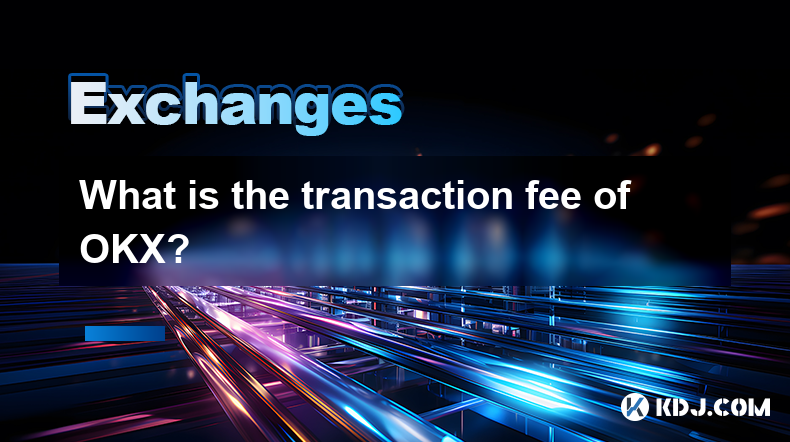
What is the Transaction Fee of OKX? A Deep Dive into OKX's Fee Structure
Key Points:
- OKX's transaction fees are dynamic and depend on several factors including the trading pair, the trading volume, and the user's VIP level. There's no single, universally applicable fee.
- The platform utilizes a tiered system, rewarding higher-volume traders with lower fees. This incentivizes active participation and larger trades.
- Fees are generally competitive with other major cryptocurrency exchanges, although specific comparisons require analyzing individual trading pairs and volume levels.
- Understanding the fee structure is crucial for maximizing profitability, especially for high-frequency traders and those conducting large transactions.
- OKX also offers fee discounts and rebates through various programs and promotions, further impacting the final cost.
- Hidden fees are minimal, but users should still carefully review all charges before confirming trades.
Understanding OKX's Transaction Fee Structure:
- The Maker-Taker Fee Model: OKX primarily employs a maker-taker fee model, a common practice among cryptocurrency exchanges. This system differentiates between "makers" and "takers" of liquidity. Makers are users who add liquidity to the order book by placing limit orders that aren't immediately filled. These orders contribute to the depth and stability of the market. Takers, conversely, remove liquidity by placing market orders that immediately execute against existing limit orders. Makers generally receive a fee rebate (a negative fee), while takers pay a fee. The exact percentages vary based on factors discussed below. The logic behind this model is to incentivize users to contribute to the overall liquidity of the exchange, benefiting all participants. Understanding whether your order is a maker or taker is paramount to predicting your fee. A limit order placed far from the current market price is more likely to act as a maker, while a market order or a limit order placed very close to the current price is more likely to be a taker. The complexities of order book dynamics and the constant shifting of prices can make precise prediction difficult, but understanding the fundamental principles is key. Furthermore, the interaction between different order types (limit, market, stop-limit, etc.) and their impact on maker/taker status can be intricate, highlighting the need for careful consideration before placing each order. Finally, the implementation of this model isn't always perfectly clear-cut; sophisticated order routing algorithms and internal exchange processes can influence the ultimate classification of an order.
- Tiered VIP System and Volume-Based Discounts: OKX operates a tiered VIP system based on the user's 30-day trading volume. As a user's trading volume increases, they climb to higher VIP levels, unlocking progressively lower transaction fees. This system encourages active trading and rewards high-volume users with substantial savings. The exact fee schedule for each VIP level is publicly available on the OKX website and is subject to change. It's crucial to regularly check the updated fee schedule to optimize your trading strategy. The calculation of the 30-day trading volume is usually based on a rolling average, meaning the volume is continuously updated, and your VIP level can change dynamically based on your recent trading activity. This dynamic system encourages consistent trading to maintain or improve your VIP status and associated benefits. The tiers aren't simply based on a single metric; the exchange might also consider other factors, such as the types of assets traded and the overall trading frequency. Understanding these nuances is essential for maximizing the benefits of the VIP program and minimizing trading costs.
- Trading Pair Influence: The transaction fees also vary depending on the specific trading pair. Some pairs, especially those involving less liquid or more volatile cryptocurrencies, might have higher fees compared to more established and actively traded pairs like BTC/USDT or ETH/USDT. This difference reflects the inherent risks and complexities associated with trading less liquid assets. The exchange needs to account for the increased risk and potential for slippage, which are passed on to the user in the form of higher fees. These variations can be significant, impacting profitability. It's vital to compare fees across different trading pairs before initiating a trade, particularly for pairs involving less-traded altcoins. The volatility of the market also influences the fees, as high volatility generally leads to higher fees due to increased market risk. Staying informed about the volatility of the pairs you are trading is crucial for understanding potential fee fluctuations.
- OKX's Fee Rebates and Promotions: OKX regularly offers various fee rebates and promotions, which can significantly reduce the overall trading costs. These programs might include temporary discounts on specific trading pairs, rewards for referrals, or bonuses for high-volume traders. It is essential to stay informed about these opportunities to take advantage of potential savings. The details of these promotions are usually announced on the OKX website, social media channels, and email newsletters. Actively seeking and utilizing these promotions is a crucial element in reducing the effective transaction fees and enhancing profitability. The eligibility criteria and terms of these promotions can vary significantly, so careful review is necessary before participation. These promotions are often time-limited, so taking advantage of them requires active monitoring of the platform's announcements.
- Hidden Fees and Transparency: While OKX is generally transparent about its fee structure, it's crucial to carefully review all charges before confirming a trade to ensure there are no unexpected or hidden fees. Although rare, certain fees might be associated with specific functionalities like withdrawals, deposits, or margin trading. These fees are usually clearly outlined in the relevant sections of the OKX platform, but a thorough review is recommended to prevent surprises. Understanding the intricacies of withdrawal fees for different cryptocurrencies is essential, as some networks might charge higher transaction fees than others. The platform might also offer different withdrawal methods, each with its own associated fees, requiring careful comparison before selection. Similarly, margin trading often involves additional interest charges or funding fees, which should be considered carefully. Transparency is key, and understanding all the fees involved is critical for making informed trading decisions.
FAQs:
Q: What is the average transaction fee on OKX?
A: There's no single "average" transaction fee on OKX. The fee is dynamic and depends on factors like your VIP level, the trading pair, whether you're a maker or taker, and any active promotions. It can range from a rebate for makers to several basis points for takers, depending on volume and VIP status.
Q: How can I reduce my OKX transaction fees?
A: Increase your trading volume to achieve a higher VIP level. Utilize limit orders to act as a maker rather than a taker. Take advantage of OKX's promotions and rebates when available.
Q: Are there any hidden fees on OKX?
A: While OKX is generally transparent, always carefully review all charges before confirming a trade to ensure you understand all associated costs, including potential withdrawal or margin trading fees.
Q: How are OKX's fees compared to other exchanges?
A: OKX's fees are generally competitive with other major cryptocurrency exchanges. However, direct comparison requires analyzing specific trading pairs and volume levels, as fee structures vary significantly across platforms.
Q: Does OKX charge fees for deposits?
A: Generally, OKX does not charge fees for deposits, but the underlying blockchain network might charge network fees, which are not controlled by OKX.
Q: How often are OKX's fees updated?
A: OKX's fee schedule can be updated periodically, so it's essential to check the official website for the most current information.
Q: Where can I find the most up-to-date information on OKX's fee structure?
A: The most reliable source for current OKX fee information is the official OKX website. Look for sections dedicated to fees, pricing, or the VIP program.
Disclaimer:info@kdj.com
The information provided is not trading advice. kdj.com does not assume any responsibility for any investments made based on the information provided in this article. Cryptocurrencies are highly volatile and it is highly recommended that you invest with caution after thorough research!
If you believe that the content used on this website infringes your copyright, please contact us immediately (info@kdj.com) and we will delete it promptly.
- BONK Price Prediction: Is the Meme Coin Ready to Pop?
- 2025-06-29 14:30:12
- Bitcoin Funding Rates, Short Squeeze, and the Price Decline: A Perfect Storm?
- 2025-06-29 14:50:12
- Bitcoin Cash (BCH): Explosive Move or False Dawn?
- 2025-06-29 15:10:12
- Chainlink, Lightchain AI, and Presale Hype: What's Real?
- 2025-06-29 15:10:12
- Pi Coin Price Prediction Today: Navigating Uncertainty
- 2025-06-29 14:55:12
- Meme Coins: Buy Now, Hold Forever? (Maybe)
- 2025-06-29 14:30:12
Related knowledge
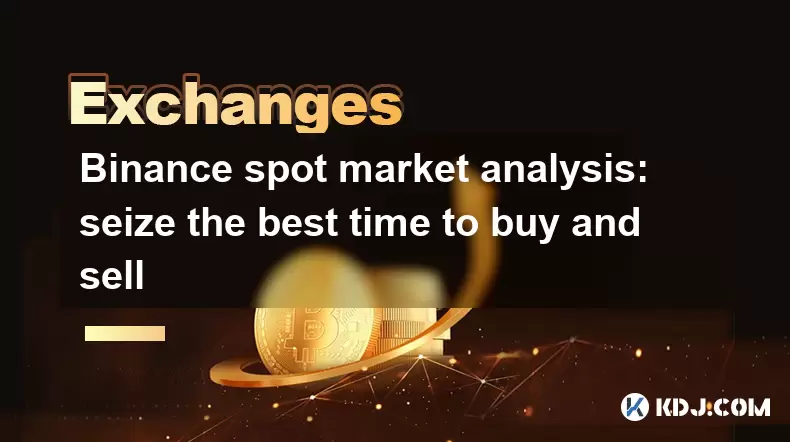
Binance spot market analysis: seize the best time to buy and sell
Jun 19,2025 at 04:56pm
Understanding the Binance Spot MarketThe Binance spot market is one of the most popular platforms for cryptocurrency trading globally. It allows users to trade digital assets at current market prices, making it essential for traders aiming to buy low and sell high. Unlike futures or margin trading, spot trading involves direct ownership of the asset aft...
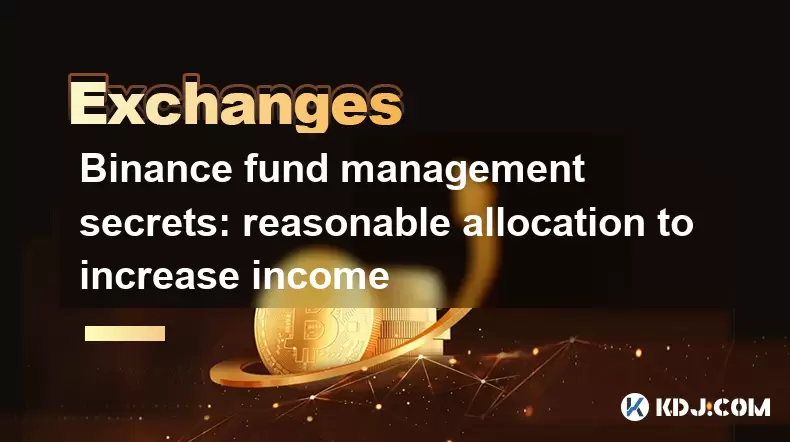
Binance fund management secrets: reasonable allocation to increase income
Jun 22,2025 at 02:29pm
Understanding Binance Fund ManagementBinance fund management involves strategic allocation of your cryptocurrency assets to optimize returns while managing risk. The key to successful fund management lies in understanding how different investment options on the Binance platform can be utilized to create a diversified portfolio. This includes spot tradin...
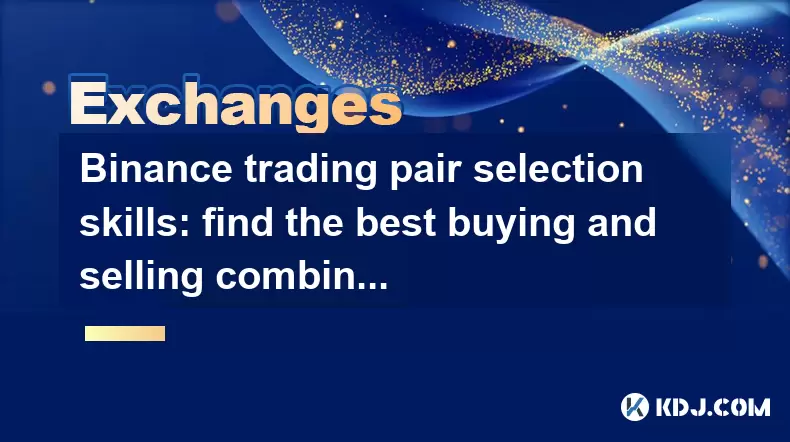
Binance trading pair selection skills: find the best buying and selling combination
Jun 23,2025 at 02:49am
Understanding the Basics of Trading Pairs on BinanceBefore diving into trading pair selection skills, it's essential to understand what a trading pair is. On Binance, a trading pair refers to two cryptocurrencies that can be traded against each other. For example, BTC/USDT means Bitcoin is being traded against Tether. Each trading pair has its own liqui...
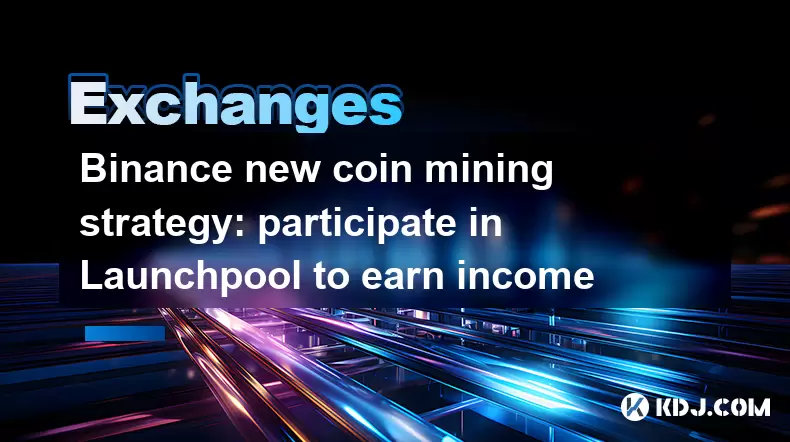
Binance new coin mining strategy: participate in Launchpool to earn income
Jun 23,2025 at 11:56am
What is Binance Launchpool and how does it work?Binance Launchpool is a feature introduced by the world’s largest cryptocurrency exchange, Binance, to allow users to earn new tokens through staking. This platform enables users to stake their existing cryptocurrencies (such as BNB, BUSD, or other supported assets) in exchange for newly launched tokens. T...
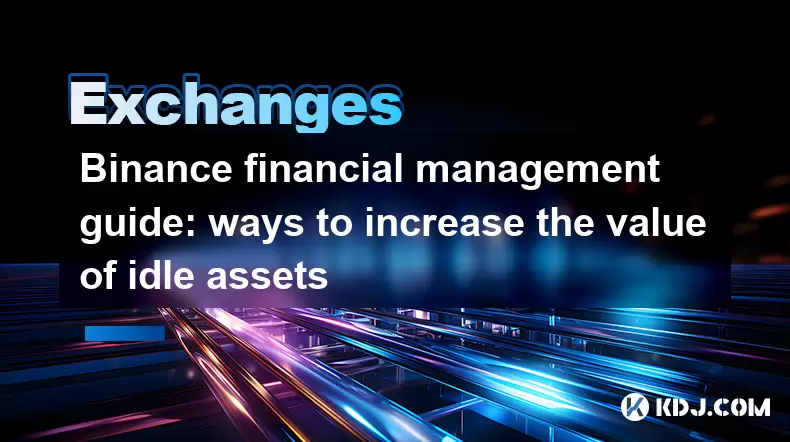
Binance financial management guide: ways to increase the value of idle assets
Jun 19,2025 at 11:22pm
Understanding Idle Assets in the Cryptocurrency SpaceIn the fast-paced world of cryptocurrency, idle assets refer to digital currencies that are not actively being used for trading, staking, or yield farming. Holding these funds in a wallet without utilizing them means missing out on potential growth opportunities. Binance, as one of the leading platfor...
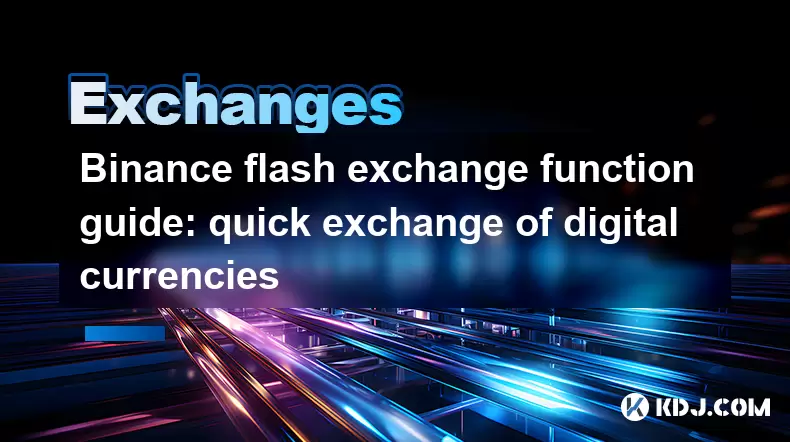
Binance flash exchange function guide: quick exchange of digital currencies
Jun 23,2025 at 12:29pm
What is the Binance Flash Exchange Function?The Binance Flash Exchange function is a powerful tool designed to allow users to instantly swap between supported cryptocurrencies without the need for placing traditional buy/sell orders. This feature simplifies the trading process by offering a direct exchange mechanism, eliminating the requirement to conve...

Binance spot market analysis: seize the best time to buy and sell
Jun 19,2025 at 04:56pm
Understanding the Binance Spot MarketThe Binance spot market is one of the most popular platforms for cryptocurrency trading globally. It allows users to trade digital assets at current market prices, making it essential for traders aiming to buy low and sell high. Unlike futures or margin trading, spot trading involves direct ownership of the asset aft...

Binance fund management secrets: reasonable allocation to increase income
Jun 22,2025 at 02:29pm
Understanding Binance Fund ManagementBinance fund management involves strategic allocation of your cryptocurrency assets to optimize returns while managing risk. The key to successful fund management lies in understanding how different investment options on the Binance platform can be utilized to create a diversified portfolio. This includes spot tradin...

Binance trading pair selection skills: find the best buying and selling combination
Jun 23,2025 at 02:49am
Understanding the Basics of Trading Pairs on BinanceBefore diving into trading pair selection skills, it's essential to understand what a trading pair is. On Binance, a trading pair refers to two cryptocurrencies that can be traded against each other. For example, BTC/USDT means Bitcoin is being traded against Tether. Each trading pair has its own liqui...

Binance new coin mining strategy: participate in Launchpool to earn income
Jun 23,2025 at 11:56am
What is Binance Launchpool and how does it work?Binance Launchpool is a feature introduced by the world’s largest cryptocurrency exchange, Binance, to allow users to earn new tokens through staking. This platform enables users to stake their existing cryptocurrencies (such as BNB, BUSD, or other supported assets) in exchange for newly launched tokens. T...

Binance financial management guide: ways to increase the value of idle assets
Jun 19,2025 at 11:22pm
Understanding Idle Assets in the Cryptocurrency SpaceIn the fast-paced world of cryptocurrency, idle assets refer to digital currencies that are not actively being used for trading, staking, or yield farming. Holding these funds in a wallet without utilizing them means missing out on potential growth opportunities. Binance, as one of the leading platfor...

Binance flash exchange function guide: quick exchange of digital currencies
Jun 23,2025 at 12:29pm
What is the Binance Flash Exchange Function?The Binance Flash Exchange function is a powerful tool designed to allow users to instantly swap between supported cryptocurrencies without the need for placing traditional buy/sell orders. This feature simplifies the trading process by offering a direct exchange mechanism, eliminating the requirement to conve...
See all articles

























































































